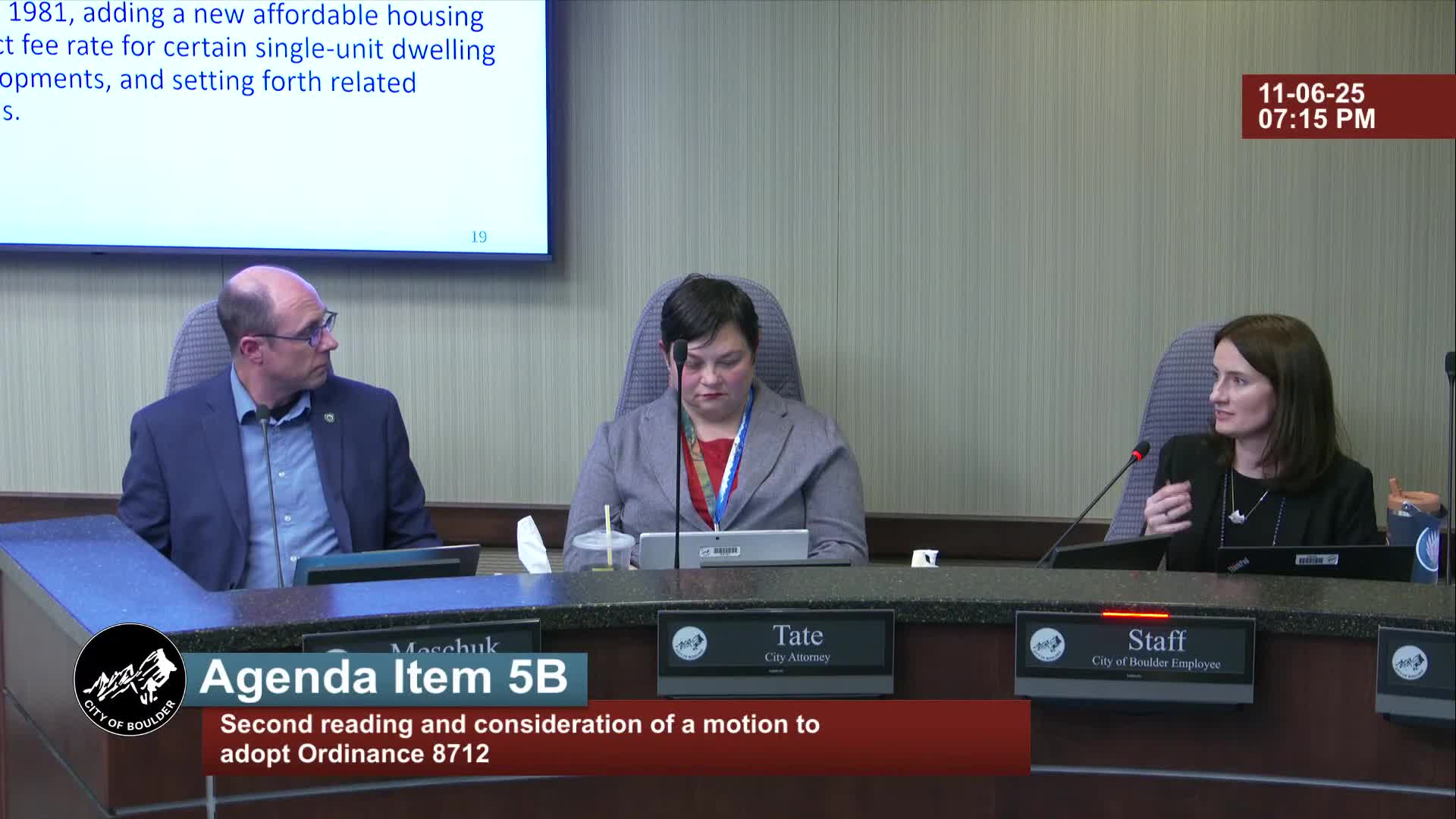Boulder releases updated Climate Action Plan draft tying mitigation, resilience and equity to a whole‑of‑government implementation
November 08, 2025 | Boulder, Boulder County, Colorado
This article was created by AI summarizing key points discussed. AI makes mistakes, so for full details and context, please refer to the video of the full meeting. Please report any errors so we can fix them. Report an error »

City staff presented a draft update of Boulder’s Climate Action Plan (CAP) during the Nov. 6 meeting, outlining next steps to move from planning into implementation and to make climate work more accessible to the public.
New structure and goals: The draft elevates three community‑wide goals—mitigation, resilience and equity—on equal footing, adds local, downscaled climate‑risk data, and organizes action under seven focus areas with “big moves” and measurable KPIs. Staff emphasized a ‘‘whole‑of‑government’’ approach that places responsibility for climate action across city departments rather than within a single program.
Key points: Staff said the draft incorporates a consumption‑based emissions inventory (which roughly doubles the community footprint when out‑of‑jurisdiction emissions from goods and services are counted) while maintaining local emissions targets for jurisdictional sources. The plan reserves specific action items and projects to implementation planning; staff emphasized the need for accessible public materials, dashboards and an early‑2026 launch.
Public engagement and equity: Staff summarized a year of community engagement and an equity analysis; the draft includes a new big move to empower youth and intergenerational learning and calls for shifting power to frontline communities to co‑design programs. The plan cross‑references other city plans (transportation, water, OSMP) to avoid duplication and to align goals.
Funding and implementation: The city’s climate tax and other dedicated funds remain the primary funding sources, supplemented by grants and partner contributions, staff said. Council questioned funding durability, what the next steps are for building electrification and gas‑system transition, and how the city will show progress through dashboards and scorecards. Staff said the climate tax funds ongoing programs through 2040 but is not sufficient alone to fund all strategy implementation; staff will prioritize and seek partnerships and grants.
Council response: Councilmembers welcomed the whole‑of‑government framing and urged clearer public dashboards, stronger integration of food and water systems, and continued emphasis on equity and frontline leadership. Staff agreed to finalize design elements, publish interactive tracking tools, and return with implementation milestones.
New structure and goals: The draft elevates three community‑wide goals—mitigation, resilience and equity—on equal footing, adds local, downscaled climate‑risk data, and organizes action under seven focus areas with “big moves” and measurable KPIs. Staff emphasized a ‘‘whole‑of‑government’’ approach that places responsibility for climate action across city departments rather than within a single program.
Key points: Staff said the draft incorporates a consumption‑based emissions inventory (which roughly doubles the community footprint when out‑of‑jurisdiction emissions from goods and services are counted) while maintaining local emissions targets for jurisdictional sources. The plan reserves specific action items and projects to implementation planning; staff emphasized the need for accessible public materials, dashboards and an early‑2026 launch.
Public engagement and equity: Staff summarized a year of community engagement and an equity analysis; the draft includes a new big move to empower youth and intergenerational learning and calls for shifting power to frontline communities to co‑design programs. The plan cross‑references other city plans (transportation, water, OSMP) to avoid duplication and to align goals.
Funding and implementation: The city’s climate tax and other dedicated funds remain the primary funding sources, supplemented by grants and partner contributions, staff said. Council questioned funding durability, what the next steps are for building electrification and gas‑system transition, and how the city will show progress through dashboards and scorecards. Staff said the climate tax funds ongoing programs through 2040 but is not sufficient alone to fund all strategy implementation; staff will prioritize and seek partnerships and grants.
Council response: Councilmembers welcomed the whole‑of‑government framing and urged clearer public dashboards, stronger integration of food and water systems, and continued emphasis on equity and frontline leadership. Staff agreed to finalize design elements, publish interactive tracking tools, and return with implementation milestones.
Don't Miss a Word: See the Full Meeting!
Go beyond summaries. Unlock every video, transcript, and key insight with a Founder Membership.
✓
Get instant access to full meeting videos
✓
Search and clip any phrase from complete transcripts
✓
Receive AI-powered summaries & custom alerts
✓
Enjoy lifetime, unrestricted access to government data
30-day money-back guarantee

